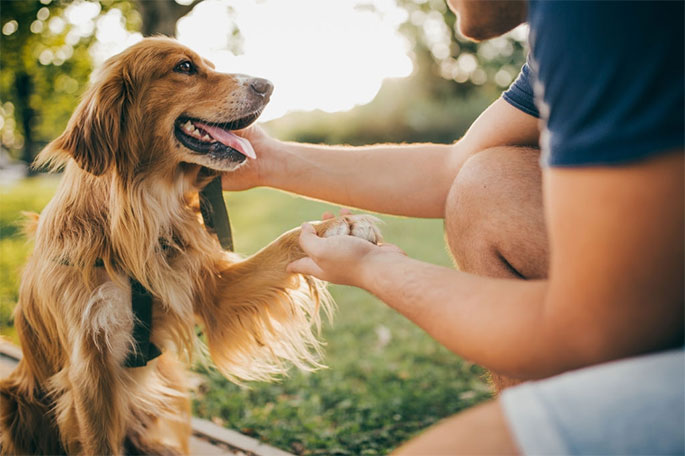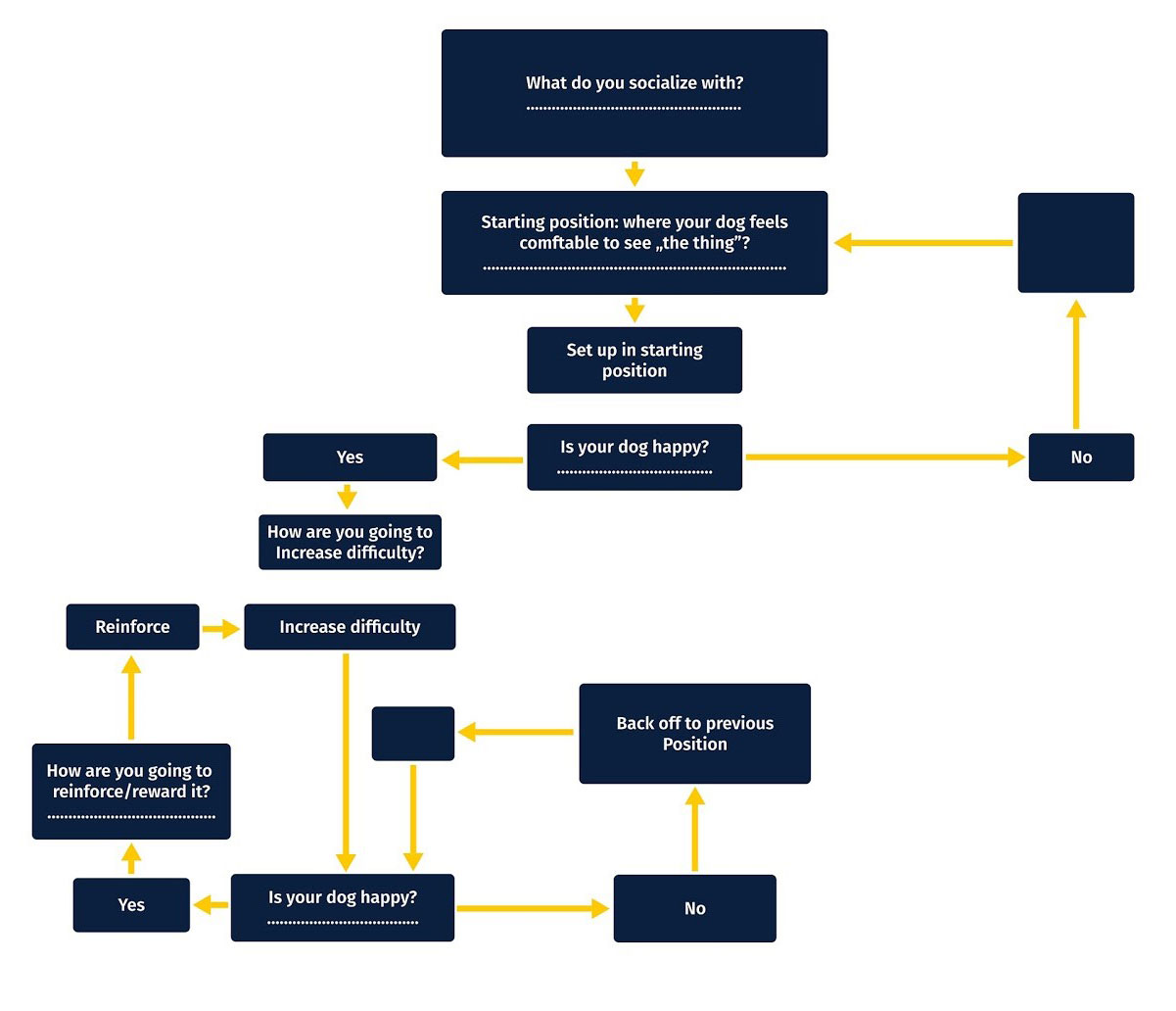
Socialization is a vast topic and currently is continuously on my mind because I have a three and a half months old puppy! Every walk is somewhat a socialization experience. It’s essential to think ahead and be prepared to support your dog better.
Let’s start by defining what we are talking about. Google says that “socialization is a process of learning to behave in a way that is acceptable to the society.” To be honest, I love this definition. It’s not just showing new things. It’s teaching what stimulus a dog should respond to, how to respond or which just to ignore.
Socialization isn’t only about puppies. Of course, it is a significant part of the puppy’s life because they need to learn how to survive in this world, but by definition, it’s just learning the correct response. It’s as much of a puppy thing as for adult dogs.
Before we move on, I want to address a huge misconception. Socialization doesn’t equal interaction! We can socialize by teaching to ignore something. This is most misunderstood when it comes to dog-dog interactions. Letting them just play all the time is not proper socialization. With that out of the way, let’s get started.
This article will tackle two topics that are, in my opinion, a huge game-changer when it comes to successful socialization:
– body language
– teaching escape
After that, we will combine it into easy to follow the protocol that can be applied to any situation.
Body Language – Very Important Thing in Animal Socialization
Imagine two people; one speaks English, the other one Russian. They will struggle to communicate because they speak different languages… Obviously. Yet we still forget about it when it comes to dogs. They communicate a lot of things, but we don’t spend nearly enough time to learn to see it.
You can read whole books about body language, and many people are far more advance in understanding it than me. However, we don’t need a Ph.D. to learn enough to have reliable communication on a daily bases. What it takes is just common sense and some time of dedicated practice.
If I asked you how your dog looks like when he/she is happy, most likely, you would be able to imagine it. But would you be able to describe it to someone who never met your dog in a way that he can see the same image? It’s a much harder task. Isn’t it?
Why am I asking you this? Because it’s vital for your successful socialization. Learning to describe your dog when he/she is happy or sad (in great detail) allows you to see the gradual change from one state to the other. When you start a socialization protocol (discussed later in this article), this is the information about whether to make things harder or to back off.
Yes! Your dog is the one who decides what to do and when. You’re there to support him/her on every choice they make. That’s how real confidence is built. Making a choice to socialize with something and just enduring through a scary thing is like a difference between day and night. We can forget about it!
How Can We Learn Body Language?
Simply by watching. You can sense when your dog is happy or sad. Describe it. Take a piece of paper and write down how does it look like. This thing alone can make an incredible difference in your lives.
Socialization the Dog with the Environment
Things to look at:
- Ear position
- blinking
- liking
- head position (lower higher)
- breathing
- tail position
- position of dogs body (at first he/she stood frontally, and later they stand sideways) etc.
How to Socialization Puppies? Teaching to Retreat
I don’t like the word “escape.” You can escape when something is lost. I call it “retreat” because it’s sometimes the smartest choice you can make during socialization battle.
What does it even mean? Let me explain. There will be times during socialization when your dog will tell you that it’s too much. Thanks to your knowledge about the dog’s body language, you can now hear him/her saying, “I’m not ready for this.” This paragraph will focus on learning what we are going to do with this information.
How your retreat will vary depending on what do you socialize with. But it’s essential to think this through before you start working. For example, you practice passing another dog when you walk on a leash. If at any point in time you see that “happy expression” start changing, you need to know already:
- which direction will you retreat to
- how far
- how you will communicate it to your dog
- what will you do when you stop moving away,
It might sound overwhelming and hard to figure out, but it’s really not. If you give it some thought, it will be fine. The fact alone of you being consistent with your behavior brings a lot of clarity to your dog. Humans tend to be pretty random and thus hard to understand for dogs. By using a pattern, your dog will be able to know what will happen. The question you need to ask yourself is, “How am I going to make scary things less scary?” If it is noise, how will I make it quieter? If it’s another dog, then how will I give my dog more space/ end the interaction and so on.
Effective Dog Socialization Protocol
Let’s put it all together. We will create something like a templet that you will be able to fill depending on what will you socialize with. Answering all questions will give you step by step guide of what to do. It can be used for socialization with anything!
Effective Dog Socialization
I just wanted to add that sometimes progress is slow, and we can get frustrated that it’s not working but put yourself in a dog’s position. They live in a weird human world, and some dogs need more time to learn certain things. Being patient and supportive makes you a great friend for your dog. Remember that you are in this together. If you just focus on what your dog is telling you at the moment, progress will come faster than you think! For more information check out Foundation Behaviors or Behavior Analysis & Modification online course at Tromplo!




